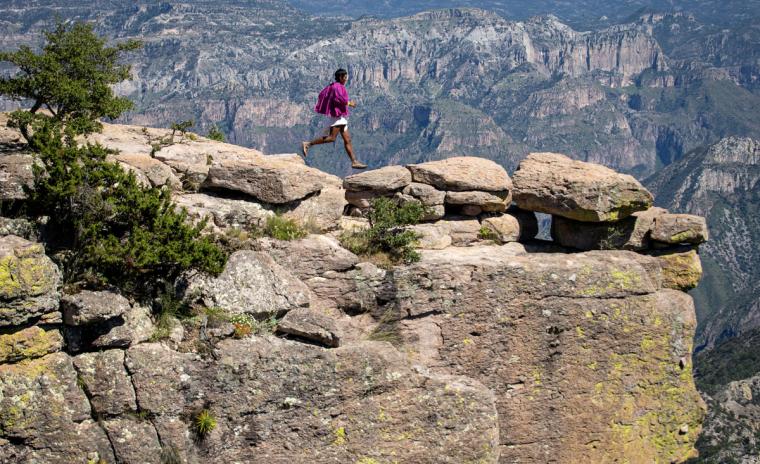Several Indigenous peoples see running long distances as an indication of strength, and incorporate such endurance tests into rites of passage or other ceremonies. The Rarámuri of the state of Chihuahua, Mexico, run not only as a form of prayer but also as part of their everyday lives. Chihuahua’s rocky, mountainous terrain is filled with steep canyons with wide rivers, and the Rarámuri live far from roads and each other. From the time they are young children, they must cover great distances by foot.
This makes them ideal athletes for endurance races such as the one known as the Ultramaratón de las Barrancas del Cobre (Copper Canyon Ultramarathon), an international competition that draws the Rarámuri and those who want to run with them in Chihuahua’s Copper Canyon. Fueled by “pinole”—a traditional energy drink of ground corn mixed with water—they can cover more than 60 miles in a day. During such races, men and women might run in the same competition, and many Rarámuri still wear their traditional clothing. The women are dressed in cotton skirts and blouses, while the men have bellowing shirts paired with a type of loincloth called a “taparrabos.” Both men and women run in their “huaraches,” leather sandals with rubber soles.
Photographer Mauricio Ramos accompanied legendary Rarámuri athlete Arnulfo Quimare for three days before he competed in a 50-mile race in the Ultramaratón in 2014. Ramos said Quimare “looked like a graceful deer” when he ran, and yet he also noted that all the Rarámuri runners are “so strong.”
On the morning that Ramos shot this image, Quimare appeared to be running right off the cliff. But then he stopped abruptly at the edge and spent some time looking out over the canyon. The next day, Ramos would only be able to keep up with Quimare about a hundred yards and was kept in suspense the rest of the day, wondering if he would win. In 2006, Quimare took first place in this race, and in 2014, he still placed high—21st overall.

